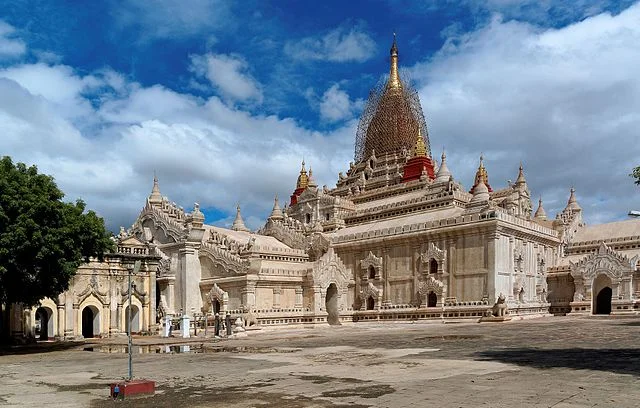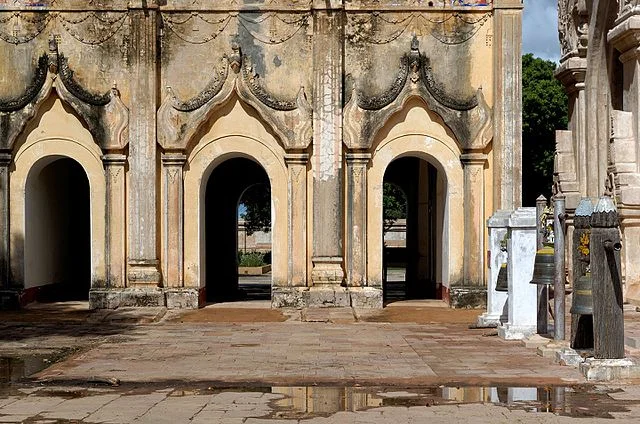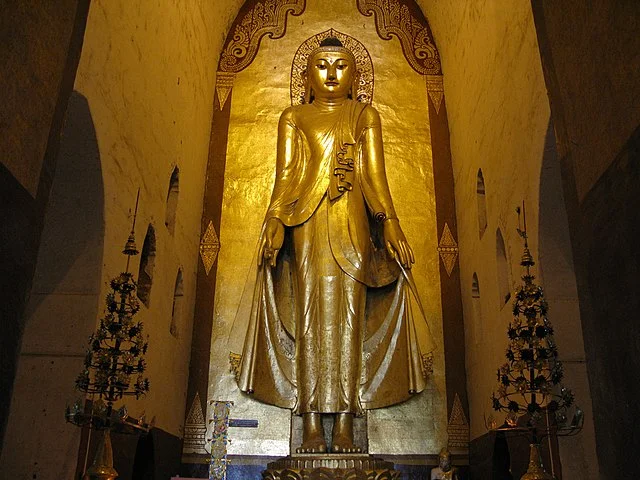Ananda Temple is one of the most significant and beautiful temples in Myanmar, showcasing early Buddhist architecture in Southeast Asia. Located in Bagan, it was built in 1105 AD by King Kyanzittha of the Pagan Dynasty, a prominent ruler known for his efforts in strengthening Buddhism in his kingdom.
Get your dose of History via Email
Historical Background

King Kyanzittha reigned from 1084 to 1113 AD, a time when Buddhism was firmly established in Myanmar. During his rule, the Pagan Kingdom enjoyed peace, allowing resources to focus on religious and cultural development. Kyanzittha, a devout Buddhist, sponsored the construction of many temples and stupas in Bagan, including the Ananda Temple. The temple’s design reflects strong Indian influences, likely from monks and craftsmen who visited from the Indian subcontinent.
Architectural Design and Structure

The Ananda Temple is noted for its unique cruciform layout. The central square of the temple measures about 53 meters on each side, and the entire structure spans approximately 82 meters. The temple’s architectural style draws from Mon and Indian traditions, reflecting the influence of Indian Buddhism on Myanmar during the 11th century.
Ananda Temple’s exterior includes a central spire rising above the main structure, resembling Mount Meru, a sacred mountain in Buddhist cosmology. The gilded spire reaches approximately 51 meters, visible across the Bagan plains. The temple’s four entrances, each with a large portico, allow natural light to enter, illuminating the interior halls.
Interior Layout and Art

The temple interior is designed to guide visitors toward spiritual contemplation. A series of corridors lead to the main sanctum where four large Buddha statues, each facing a cardinal direction, are housed. These statues represent the four Buddhas of this world age. Each statue displays a distinct hand gesture, symbolizing various aspects of Buddhist teachings. The standing Buddha statues are notable for their calm expressions and smooth, polished features, reflecting a classic style of the Bagan period.
The walls and ceilings of the Ananda Temple feature elaborate frescoes and carvings, depicting scenes from the life of the Buddha. These carvings reveal a high level of craftsmanship and provide insight into the spiritual devotion of the artisans. Along the inner walls, a series of 80 relief panels narrates the Jataka tales—stories of the Buddha’s past lives—illustrating the virtues of patience, wisdom, and compassion.
Restoration Efforts

Over the centuries, the Ananda Temple has required multiple restorations due to natural wear, earthquakes, and human impact. The 1975 earthquake severely damaged the structure, leading to extensive restoration work funded by both the Myanmar government and international organizations. In recent years, preservation efforts have focused on repairing cracks, strengthening the foundations, and restoring the artwork.
In 1996, Ananda Temple underwent a significant renovation, including the controversial application of gold leaf over the original spire. This addition aimed to restore the temple’s former glory but was met with criticism for potentially altering its historical authenticity.
Significance in Buddhism

Ananda Temple is an important pilgrimage site for Buddhists in Myanmar and abroad. The temple represents the fusion of Indian Buddhist influences with local Burmese artistry, demonstrating the spread of Buddhism across Asia. Its historical and architectural significance has earned it a revered status among Myanmar’s ancient monuments.
Conclusion
The Ananda Temple stands as a remarkable example of early Burmese Buddhist architecture. Its intricate design, spiritual symbolism, and dedication to the Buddha’s teachings make it a treasured cultural site in Myanmar. Through ongoing preservation, the temple continues to inspire both pilgrims and visitors, bearing witness to the enduring influence of Buddhism in Southeast Asia.
Source:

